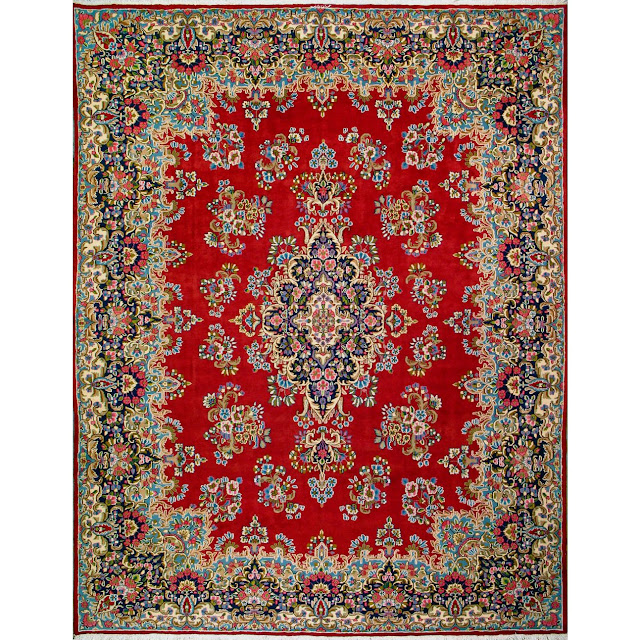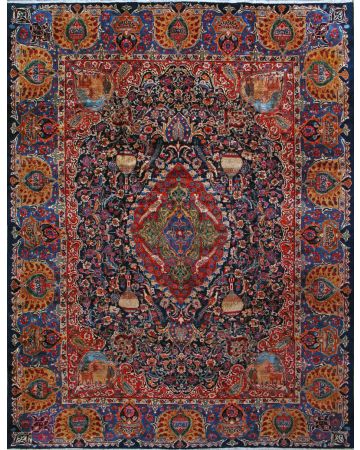How Were The Persian Rugs Made?
The construction of handmade Persian rugs varies depending on the city, region or village where they were woven. The “traditional” Persian carpet is tied with a single looping knot, known as Persian or Senneh knot. The vertical strand of thread in a Persian carpet has one loop. This use of a single knot is essential in establishing the identity of the place where the rug was made and can sometimes help in identifying the artisans who made it.
When comparing rugs,
the way to identify the knot used is to splay open the pile by bending the rug against
itself and looking at the base of the knot.
Are the Persian rug designs unique to
any specific region?
The design of a
rug can be misleading. A few rugs may feature a “Persian design” but were woven
elsewhere. An example of this convention would be Indo-Persian rugs. These rugs
were woven in India with Persian design and construction elements. Surprisingly
enough, in spite of the tribal wars, migrations, commercial influence and
rebellions - the techniques of construction used by different cultures has
changed very little in the fullness of time.
A lot of the
older Persian rugs from Tabriz have a central medallion, quartered corner
medallions appearing over a field of scrolling vine ornaments, accented with
single animals or birds, animal combat scenes and mounted hunters. Carpet
grounds were red, blue and sometimes white but colors tended to be muted,
partly for the reason that the sheep in the Northwest have coarse wool but
mainly due to the salt quality of the water used in the dyeing process. Patterns
of traditional Persian rugs are
recognizable to the trained eye and have existed for several generations.
When did the production of Persian rugs
& carpets started?
Amongst the rug
producing regions of the Middle East, none is a varied and extensive in its
output as Persia. It is possible that fragments of 9th century pile
carpets discovered at Fostat near Cairo were imported from what is today the
country of Iran. There is proof that carpet weaving in Iran actually started
during the Mongol or Ilkhanid period c. 1300, as well as for the subsequent
Timurid period up through the late 15th century.
Major centers of
production tool place (and some still are) in the cities of Tabriz, Kerman, and
Isfahan. That said, there is no firm historical documentation for attributing
carpets to the last site during the early years of rug production. However, the
“golden area” of Persian carpet weaving actually started after 1500 with the
foundation of the Safavid dynasty by Shah Ismail. During the 16th
and 17th centuries, Persia produced a lot of the great masterpiece
rugs that are still in existence today.
During these
periods large Persian rugs were exported all
over the world, from Japan to Western Europe. It is perhaps as significant that
the lavish rugs captured, as booty, from the Ottoman Turks, after the Battle of
Vienne in 1683, consisted primarily of Persian rugs.
If you are in
search of some of the best Persian rugs online, do not miss to check out ArmanRugs!

.jpg)


Comments
Post a Comment